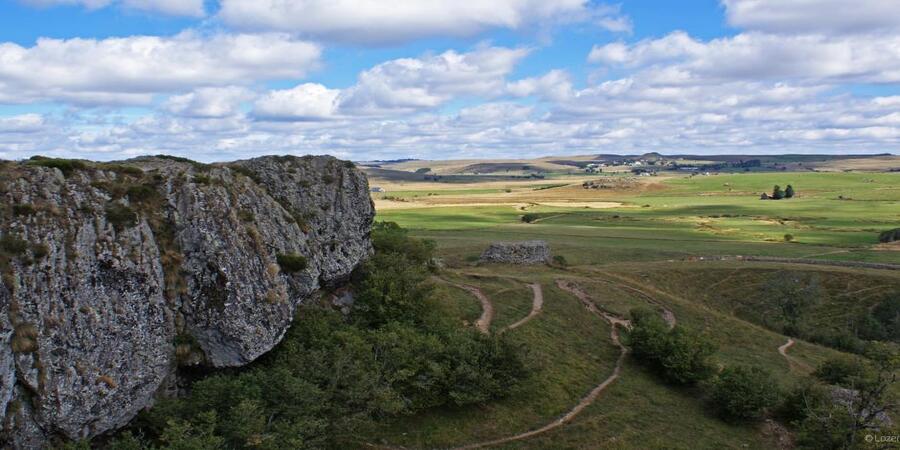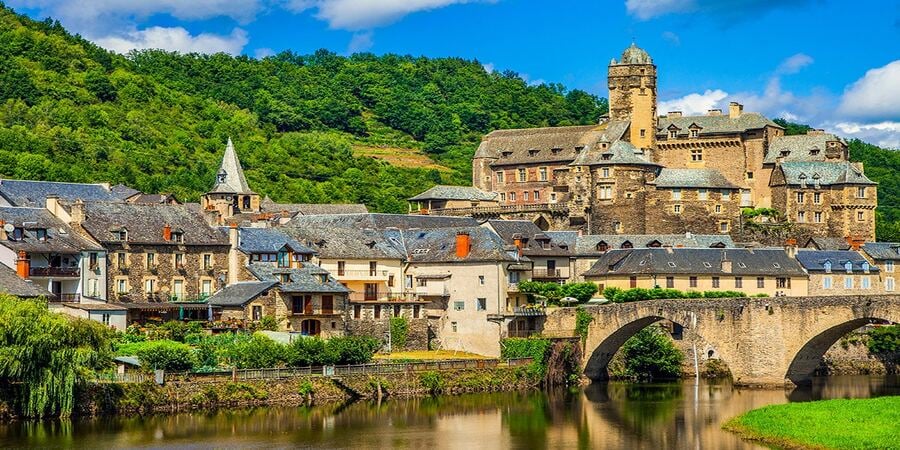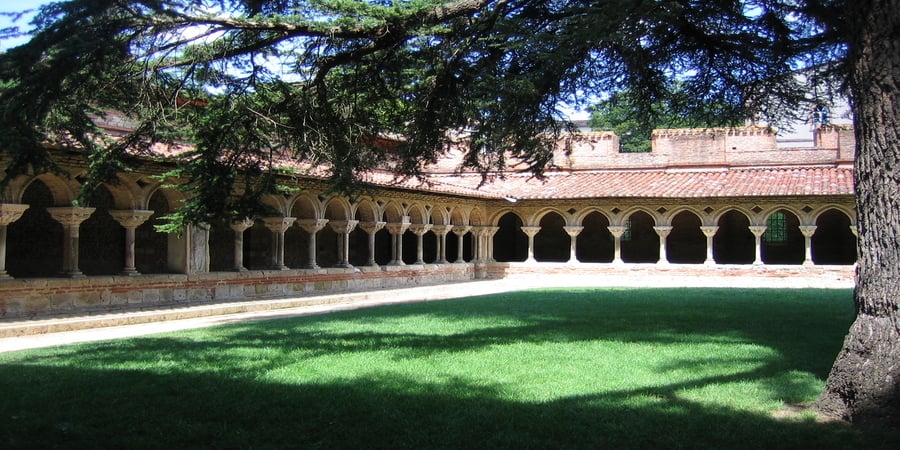The Camino de Santiago, or Way of Saint James, has been a pilgrimage route for centuries. Pilgrims across Europe have travelled to Santiago de Compostela in Spain, following various Camino routes that developed over time. One of the most famous and scenic routes is the Le Chemin du Puy, the Via Podiensis or Le Puy Way. This route starts from Le Puy-en-Velay in France and offers pilgrims a journey filled with stunning landscapes, historic towns, and deep cultural significance. This article will explore six must-see destinations along the Le Puy Camino.
The Historical Significance of Le Puy-en-Velay
Le Puy-en-Velay is not just a starting point for the Le Puy Camino; it is a town steeped in history and tradition. For centuries, pilgrims have gathered here before embarking on their journey to Santiago de Compostela. The town is best known for its iconic Notre Dame du Puy Cathedral, a pilgrimage destination since the Middle Ages.
Notre-Dame du Puy Cathedral and Notre Dame de France
The cathedral, dating back to the 11th century, is a stunning example of Romanesque architecture. Its façade, built from volcanic rock, is a striking sight against the surrounding landscape. Pilgrims still climb the winding cobbled streets leading to the cathedral, where they can attend mass or receive a blessing before beginning their journey.
A short climb up to the top of the hill will lead pilgrims to the Notre Dame de France statue. Standing proudly above the town, this statue offers breathtaking panoramic views of the valley below. Pilgrims can walk to the top for a spiritual and physical challenge while also taking in the scenic beauty that makes Le Puy-en-Velay so special.

Rocher St Michel and the Saint Michel d’Aiguilhe Chapel
Another highlight in Le Puy is the Rocher St Michel, a volcanic peak where the Saint Michel d’Aiguilhe chapel stands. To reach the chapel, pilgrims must ascend 268 steps carved into the rock, which adds to the sense of accomplishment. Bishop Godescalc built the chapel in the 10th century after his pilgrimage to Santiago, and it remains an important site for those on the Camino.
Le Puy-en-Velay is the starting point of the Le Puy Camino, and pilgrims traditionally gather at the Place du Plot before setting off along the Rue St Jacques, the town’s main street leading out towards the open countryside.
The Aubrac Plateau: A Peaceful Wilderness
Leaving Le Puy-en-Velay, pilgrims venture into the vast and open landscapes of the Aubrac Plateau. This region, known for its wide, grassy hills and peaceful atmosphere, is a welcome change of pace after the bustling town life.
The Legend of Dormerie d’Aubrac
As you journey through the Aubrac Plateau, visit Dormerie d’Aubrac, a small hamlet with a fascinating history. According to local legend, a Flemish pilgrim named Adalard founded the village in the 12th century. After his pilgrimage to Santiago, Adalard established the village as a shelter for fellow pilgrims. The area remains a tranquil resting point for those walking the Camino.
The plateau offers stunning views of wild landscapes, making it one of the route’s most serene and scenic parts.

The Lot Valley: Picture-Perfect Villages
The Le Puy Camino also takes pilgrims through the picturesque Lot Valley, a region known for its charming medieval towns and beautiful riverfronts. The valley is dotted with quaint villages that were awarded the title of Les Plus Beaux Villages de France due to their exceptional heritage and beauty.
Saint-Côme d’Olt, Espalion, and Estaing
Saint-Côme d’Olt is a lovely village with arched alleys and historic charm. Espalion is another beautiful stop, offering a charming riverfront and a stunning medieval bridge. Estaing, with its impressive 15th-century castle, provides a wonderful opportunity to step back in time and admire the well-preserved architecture.
Pilgrims walking through the Lot Valley will notice that many street signs are written in both French and Occitan, highlighting the region’s deep cultural roots.

Conques: A Step Back in Time
Nestled in a lush valley and surrounded by rolling hills, Conques is one of the most enchanting villages on the Le Puy Camino. Its medieval character has been preserved nearly intact, making it feel like stepping back in time.
Sainte-Foy Cathedral
The Sainte-Foy Cathedral in Conques is one of the most significant, must-sees pilgrimage sites along the Chemin du Puy. Built in the 10th century, the cathedral houses the relics of Sainte Foy, a young martyr from the 4th century. Pilgrims have been visiting the cathedral for centuries, believing in the healing powers of Sainte Foy’s relics, particularly for eye ailments.
The village, with its narrow streets and timber-framed houses, offers an idyllic atmosphere that transports visitors to a bygone era.

Cahors: The City of Bridges
Cahors, a city rich in history and charm along the Lot River, is memorable for its remarkable bridges and welcoming atmosphere.
Pont Valentré
Cahors is most famous for its medieval bridge, the Pont Valentré. Built-in the 14th century, this fortified bridge has six arches and three towers. It is one of the Camino’s most iconic landmarks, and pilgrims cross it as they journey through the city.
Beyond the Pont Valentré, Cahors boasts a beautiful old town filled with charming alleys, quaint squares, and half-timbered buildings. The city combines natural beauty and historical significance, making it a highlight for every pilgrim on the Camino.

Moissac Abbey: A Masterpiece of Romanesque Art
The 7th-century Saint Pierre Abbey in Moissac is another must-visit stop for pilgrims. Known for its magnificent 11th-century cloister, the abbey is an outstanding example of Romanesque art.
The Cloister at Moissac Abbey
The cloister at Moissac Abbey is renowned for its intricate sculptures depicting scenes from the Bible. One of the most famous carvings depicts the Apostles, including St. James. This cloister is a true masterpiece of Romanesque architecture, offering pilgrims a moment to reflect on and appreciate historical artistry.

Practical Information for Pilgrims
The Le Puy Camino covers over 700km from Le Puy-en-Velay to Saint-Jean-Pied-de-Port, where pilgrims can join the French Way (Camino Francés) to Santiago de Compostela. The route is well-marked with the familiar yellow arrows and scallop shells, making it easy to follow.
The Camino is split into six sections, each taking about a week, enabling pilgrims to finish the route in just over a month. Many pilgrims prefer to walk one or two sections annually, allowing time to fully enjoy the journey and its highlights.
Best Time to Travel
While the Le Puy Camino can be walked year-round, it is best to travel between late spring and early autumn. Higher altitudes, such as the Aubrac Plateau, can experience winter snow, making walking difficult in certain regions difficult. By travelling in late spring or summer, pilgrims can enjoy the best possible walking conditions.
The Le Puy Camino is a route that combines natural beauty, historical landmarks, and cultural richness. From the iconic Le Puy-en-Velay to the peaceful landscapes of Aubrac and the picturesque villages of the Lot Valley, pilgrims are treated to a journey unlike any other. We hope you enjoyed the 6 must sees on the Le Chemin du Puy. Whether walking the full route or just a section, the Le Puy Camino provides pilgrims with a memorable and rewarding experience.
For more information about the Le Puy Camino and other routes on the Camino de Santiago, please don’t hesitate to contact us.
